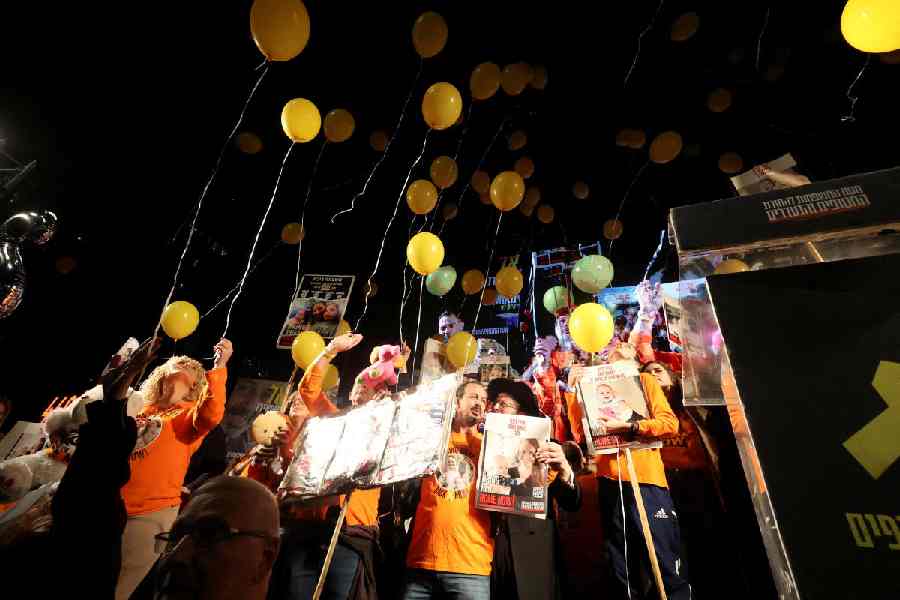When Nancy Grace Roman was 11 years old, her family was living in Reno, Nevada. She was enthralled by the stars in the clear night skies and joined with friends in forming an astronomy club.
It was the beginning of a lifelong fascination with the cosmos.
When she died Wednesday in Germantown, Maryland, at 93, Roman was remembered as “the mother of the Hubble”.
As NASA’s first chief of astronomy and the first woman in a leadership position at the space agency, Roman oversaw the early planning for the Hubble Space Telescope, which began orbiting Earth above its atmosphere in April 1990 to capture an unobstructed view of the universe.
Placed into orbit from a manned Discovery shuttle and named for pioneering American astronomer Edwin Hubble, it became the first large optical telescope in space. It has enhanced knowledge of distant galaxies as well as planets in our own solar system by transmitting images that would have been distorted if it were operating from within the Earth’s atmosphere.
The idea for that kind of large optical telescope had circulated in the scientific world since astronomer Lyman Spitzer Jr. envisioned it in 1946. But the concept met with skepticism over feasibility and cost. So the road toward getting the Hubble into the skies was a long one.
“It was Nancy in the old days before the Internet and before Google and email and all that stuff who really helped to sell the Hubble Space Telescope, organise the astronomers, who eventually convinced Congress to fund it,” Edward J. Weiler, Roman’s successor as chief scientist for the Hubble, told the Voice of America in 2011.
In addition to coordinating the efforts of astronomers and engineers in their development of the Hubble, Roman wrote testimony for NASA representatives making the case for the Hubble before Congress and she pitched the project to the Bureau of the Budget.
Roman also took part in development of the Cosmic Background Explorer, a satellite launched in 1989 that confirmed the Big Bang Theory of the universe’s creation.
She was a trailblazer for women at a time when science was considered a man’s world, and she became a longtime advocate for women in science.
“I still remember asking my high school guidance teacher for permission to take a second year of algebra instead of a fifth year of Latin,” she recalled. “She looked down her nose at me and sneered, ‘What lady would take mathematics instead of Latin?’ That was the sort of reception that I got most of the way,” she told the Voice of America.
Roman was born on May 16, 1925, in Nashville, Tennessee, the only child of Irwin Roman, a geophysicist, and Georgia (Smith) Roman, a music teacher. When she was 3 months old, the family left for Texas and Oklahoma, where her father advised oil companies on drilling possibilities.
The family moved to Reno when her father was named western regional chief for federal research into geophysics.
“In Reno, of course, the skies were very clear, a beautiful place to observe the sky, and we lived on the edge of the city at the time,” Roman recalled in a 1980 interview for the National Air and Space Museum. “We had very few lights. I started an astronomy club with the girls in the neighbourhood. We learned the constellations, read astronomy. I just never lost my interest in it.”
The family later moved to Baltimore, where she attended high school. She received a degree in astronomy from Swarthmore College in 1946, obtained a doctorate in astronomy from the University of Chicago in 1949, then worked at its Yerkes Observatory as a researcher.
She later joined the US Naval Research Laboratory, specialising in radio astronomy, and was recruited by NASA in 1959, a year after it was founded.
“The idea of coming in with an absolute clean slate to set up a programme that I thought was likely to influence astronomy for 50 years was just a challenge that I couldn’t turn down,” she recalled in her National Air and Space Museum interview.
The Soviet Union’s launching of Sputnik in October 1957 proved that satellites could fly. Nonetheless, Roman’s early work at NASA lacked the glamour attached to the manned spaceflight programme of the 1960s in response to President John F. Kennedy’s call for America to put a man on the moon by the decade’s end.
Roman retired from NASA in 1979 but continued as a consultant as work progressed toward the Hubble’s launching. In 2017, when Lego created a 231-piece Women of NASA set, Roman’s likeness was among four it featured as women who were space pioneers.
Roman’s death, at a hospital, was confirmed by a cousin, Laura Verreau, The Washington Post reported. It said she had lived in Chevy Chase, Maryland, and had no immediate survivors.
In her later years, Roman passed on her love for space research to young people and especially sought to inspire girls to pursue a career in science. She taught astronomy to fifth-graders at Shepherd Elementary School in Washington in the late 1990s.
As she put it: “One of the reasons I like working with schools is to try to convince women that they can be scientists and that science can be fun.”
c.2018 New York Times News Service











